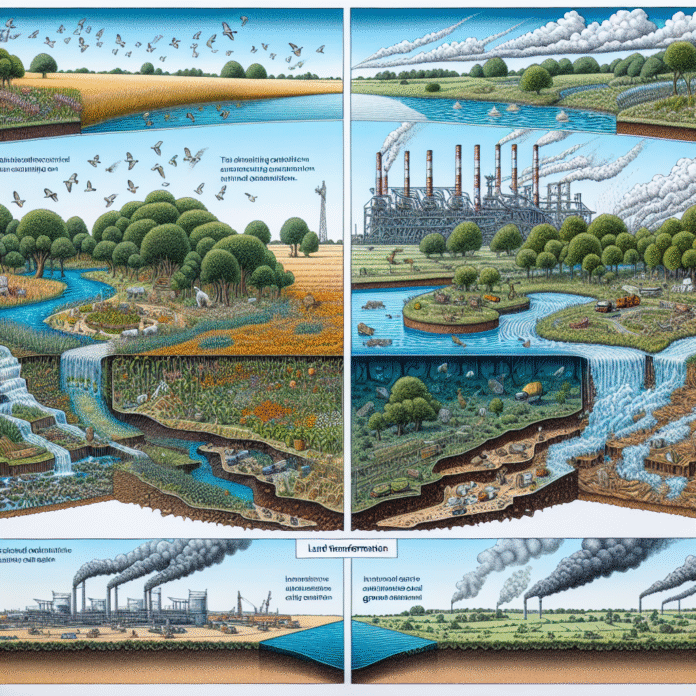Impacts of Land Use Change on Nutrient Balance and Greenhouse Gas Emissions from a Regional Perspective
“`html
Impacts of Land Use Change on Nutrient Balance and Greenhouse Gas Emissions: A Regional Perspective
Land use change is a significant driver of both nutrient balance alterations and greenhouse gas emissions, particularly at the regional level. As human activities transform landscapes—through agriculture, urbanization, deforestation, and other practices—the delicate equilibrium of nutrients in the environment is disrupted, leading to various ecological consequences.
Alteration of Nutrient Cycling
The conversion of natural ecosystems to agricultural or urban settings often results in the loss of biodiversity and the disruption of nutrient cycling processes. Natural habitats, such as forests and wetlands, play a crucial role in maintaining nutrient balance by facilitating organic matter decomposition and nutrient retention. When these areas are converted, essential nutrients like nitrogen and phosphorus can become more mobile, leading to runoff and potential eutrophication of nearby water bodies.
Greenhouse Gas Emissions from Land Use Change
Land use change is also a major source of greenhouse gas emissions, particularly carbon dioxide (CO2), methane (CH4), and nitrous oxide (N2O). Deforestation, for example, releases stored carbon into the atmosphere, contributing to climate change. Agricultural practices, including the use of synthetic fertilizers and livestock production, further exacerbate emissions of N2O and CH4. The regional impacts can vary significantly depending on the types of land use and management practices adopted.
Regional Variability in Impacts
The effects of land use change on nutrient balance and greenhouse gas emissions are not uniform across regions. For instance, tropical regions may experience more pronounced effects due to high rates of deforestation and agricultural expansion. Conversely, temperate regions may face challenges related to intensive farming practices and urban sprawl. Understanding the local context is essential for developing effective strategies to mitigate these impacts.
Mitigation Strategies
To address the negative consequences of land use change, it is vital to implement sustainable land management practices. These may include agroecological approaches that enhance nutrient use efficiency, reforestation efforts to restore carbon sinks, and integrated land-use planning that considers both ecological integrity and economic needs. Policymakers and stakeholders must work collaboratively to promote land use practices that balance human needs with environmental sustainability.
Conclusion
In conclusion, the impacts of land use change on nutrient balance and greenhouse gas emissions are profound and multifaceted. By adopting sustainable practices and recognizing regional differences, we can mitigate the adverse effects on our ecosystems and contribute to global efforts to combat climate change.
“`
